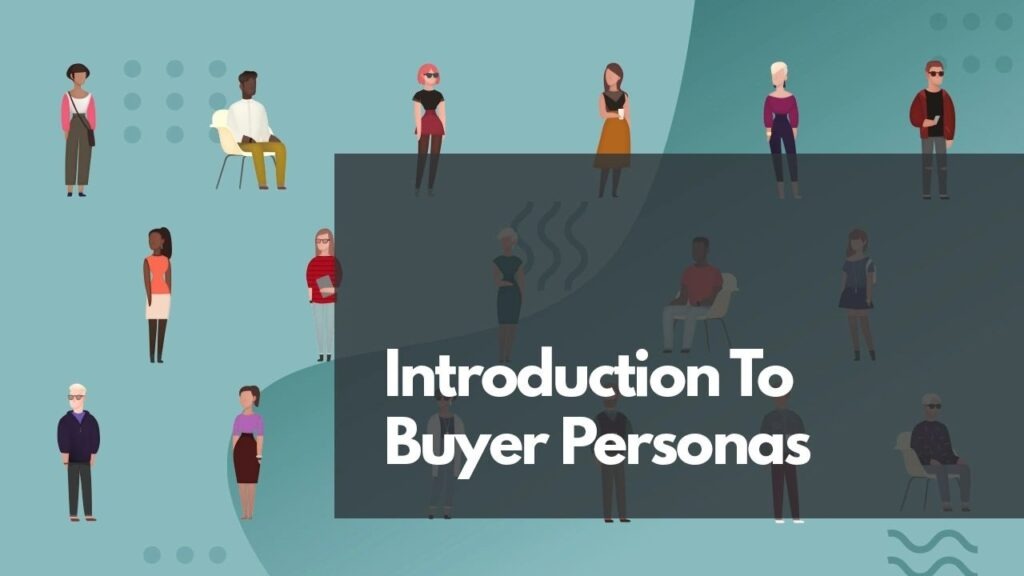When you build out your offerings, you will naturally find yourself gravitating to certain types of individuals or customers.
As a young business growing a client base from scratch, these are the customers that you have the most synergy with. Whether it is their complementary ethics, vocabulary, or specialized needs you are well-equipped to serve, these are the bread and butter of your workload—and you dig it.
This blog will dive into the concept of “Buyer Personas” and why they are essential for building effective businesses and marketing strategies.
What Is A Buyer Personas?
Thinking back on those initial clients, what likely connects them is that they share a “buyer persona” that aligns with the best you have to offer. You worked best with these clients because you understand their needs and what they are looking for out of your service. In fact, if you started a business at all, it is most likely because you recognize an underrepresented service or product in your field that you feel equipped to address.
A buyer persona takes this perspective and translates it to company-wide strategies such as product development or customer acquisition. It’s a compromise between what you do best and who you would best do it for—sort of like building a business from the outside-in. In understanding the kind of person you want to sell to, you can better develop and understand the products you are producing.
How Can I Improve My Buyer Persona?
There are plenty of strategies that can help you develop a buyer persona—these range from before product deployment to research projects following a marketing campaign, or establishing a customer database.
The goal of improving your buyer persona is to understand your client better in order to sell to them. If you can get a head start on the kinds of questions your ideal client would ask, you can tailor your pitch accordingly. With that, building a buyer persona is concerned primarily with learning how to articulate the needs of that business space more effectively.
For example, imagine you are a candlemaker. You begin to develop buyer personas that allow you to brand new products and market more effectively. If your buyer persona is a young woman, you might lean away from old-world spices like cardamom and nutmeg. If it is a young man, you might go for black wax and add redwood or sandalwood scents.
In both cases, you worked from the outside-in—from your service to the ideal customer and redefining from there. Knowing your buyer persona allows you to zone in and create a more effective product for your desired audience.
You can create multiple personas that line up with your different services. These will allow you to focus and deliver the strongest strategies no matter how your business is deployed.
A few of my favorite methods for beginning or improving a buyer persona:
-
Look through your client list and look for unifying themes. Ages, demographics, incomes, company size, how their organization is run (founder-led, collaborative, etc.)
-
Interview both your satisfied and dissatisfied customers and look for areas of improvement.
-
Use forms on your funnel to capture information relevant to your service. If, for instance, you work best with in-person meetings, include a field that can determine whether your potential client operates in a hybrid or an in-person work environment.
-
Go through your feedback and consider if it brings up things you can feasibly change. If not, perhaps it is time to stop marketing to a client profile that is perpetually dissatisfied.
The last tip here leads neatly to another concept: the “negative” buyer persona.
What Is A “Negative” Buyer Persona?
A negative buyer persona represents the kinds of people you do not want to sell your product or service to.
It may sound counter-intuitive since all business is still business, but these sorts of clients might be the worst part of your week. Examples might be clients who are more qualified than you and will be dissatisfied with your layman language. Perhaps they are too underfunded for your services, and the sales pipeline will inevitably be a waste of your time when the invoice comes around. Maybe they’re just too “Wall Street” and fast-paced for the work you can do alone!
Like any breakup, you shouldn’t sweat over a lousy fit. Staying away from these types of customers will prevent you from wasting resources on a client relationship that was doomed to start before it even began.
Hopefully, by now, you see that “make-believe” isn’t all bad for business! Building a buyer persona is as much about them as it is about you—your strengths, passions, and the kind of conversations you don’t mind having day after day.
To develop and cement these visions, an experienced marketer can help you see the hidden answers in front of you and articulate the limitations of your current strategies. Let’s chat if you’re in the process of building a new marketing strategy or are dissatisfied with where the results of your current plan end. Scale confidently with our services, and let the ideal customer come to you.

